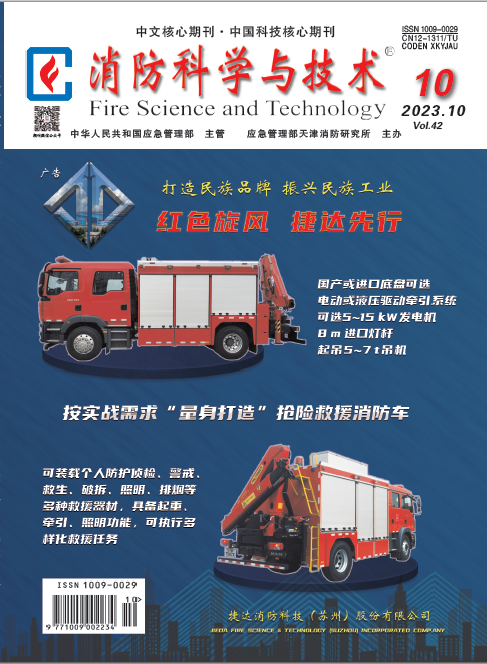|
|
Flame retardant properties and mechanisms of cotton fabrics finished by MFA microsphere suspension⁃silica sol systems
Zhou Chang, You Fei, Li Dan,
2023, 42 (10):
1428-1433.
MFA microspheres were prepared by condensation reactions with melamine (MEL), formaldehyde (FM) and 5-adenosine monophosphate (AMP), and were immersed in a sodium alginate (SA, dispersant) solution to form a SA-MFA suspension. A SiO2 sol was prepared by dehydration polycondensations using tetraethyl orthosilicate (TEOS) as a precursor. The SA-MFA suspension and SiO2 sol were coated into cotton fabrics successively by dipping-drying method. The surface morphology and functional groups of treated cotton fabrics were characterized by scanning electron microscopy (SEM) and Fourier transform infrared spectroscopy(FTIR), respectively. Thermogravimetry (TG), limiting oxygen index(LOI), cone calorimeter (CC) and SEM techniques were used to characterize the pyrolysis characteristics, flammability levels, reaction-to-fire characteristics and surface microscopic morphologies of char residues after LOI tests of treated cotton fabrics. The results show that compared with the original cotton fabric, the flame retardant performance of SA-MFA-SiO2@COT is relatively optimal. Its char residue rate (46.39%) and LOI value (28.0%) values increase by 520.18% and 55.55%, peak heat release rate (PHRR, 114.67 kW/m2) and total heat release (THR, 5.09 MJ/m2) values decrease by 31.67% and 37.35%, respectively. During a combustion process, MFA microspheres and SA pyrolyze and promote the dehydration and carbonization processes of cotton fibers to release non?flammable gases like NH3, CO2 and H2O. Such processes can thus absorb heat and cool down, and dilute combustible gas concentrations. The SiO2 gel coating absorbs heat and further condenses, provides a physical barrier and structural support effect, blocks the transfer of heat, oxygen and gaseous products. The components show obvious synergistic flame retardant effects.
Related Articles |
Metrics
|



